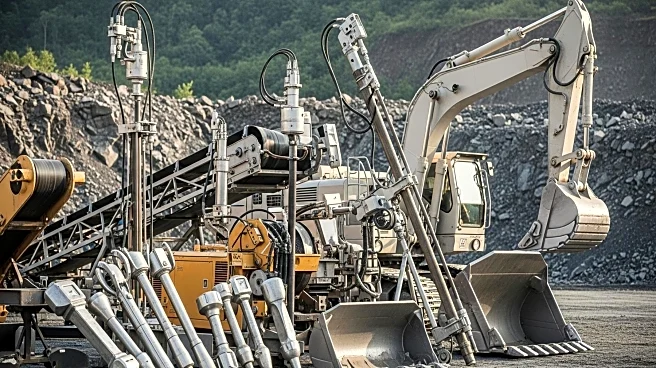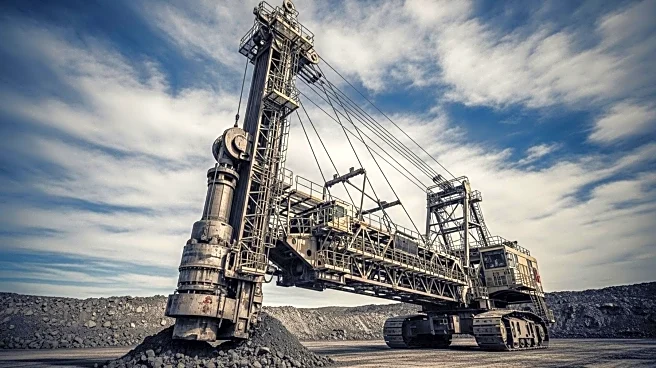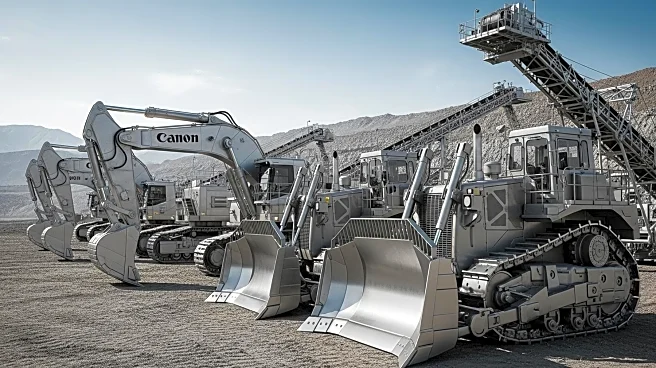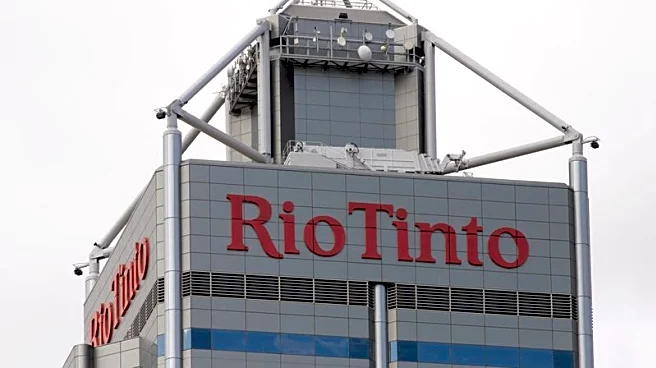What is the story about?
What's Happening?
Rio Tinto, along with its joint venture partners Mitsui Iron Ore and Nippon Steel, announced a $733 million investment to develop new iron ore deposits at the West Angelas hub in Western Australia's Pilbara region. Rio Tinto will contribute $389 million to the project, which aims to maintain the hub's annual production capacity at 35 million tonnes, thereby extending mining operations for several years. The construction phase is expected to create approximately 600 jobs, while sustaining around 950 full-time roles once operational. Autonomous trucking of ore is set to begin in 2027. This project is part of a broader suite of replacement iron ore developments across Pilbara, supporting a total capacity of around 130 million tonnes per annum.
Why It's Important?
The investment in the Pilbara iron ore project is significant for the mining industry, as it ensures the continuation of production capacity and job creation in the region. By maintaining a robust output, Rio Tinto and its partners are contributing to the stability of the global iron ore supply chain, which is crucial for steel production worldwide. The project also highlights the ongoing commitment to technological advancements, such as autonomous trucking, which can enhance operational efficiency and safety. Additionally, the investment reflects the strategic importance of the Pilbara region in global mining operations, reinforcing its role as a key supplier of iron ore.
What's Next?
As the project progresses, stakeholders will be monitoring the implementation of autonomous trucking and its impact on operational efficiency. The pre-feasibility study for Rhodes Ridge, targeting an initial capacity of up to 40 million tonnes per annum with first ore by 2030, is another development to watch. This expansion could further bolster the region's production capabilities. Additionally, the recent opening of the $2 billion Western Range iron ore mine in partnership with China Baowu Steel Group indicates ongoing efforts to sustain output from the Pilbara for up to two decades, suggesting continued investment and development in the area.
Beyond the Headlines
The investment in the Pilbara iron ore project may have broader implications for environmental and technological advancements in mining. The use of autonomous trucking could set a precedent for increased automation in the industry, potentially reducing human error and improving safety. Furthermore, the project's focus on sustaining production capacity aligns with global efforts to ensure resource availability amid fluctuating demand. The collaboration with international partners like Mitsui Iron Ore and Nippon Steel also underscores the interconnected nature of global mining operations and the importance of cross-border partnerships in resource development.
AI Generated Content
Do you find this article useful?














